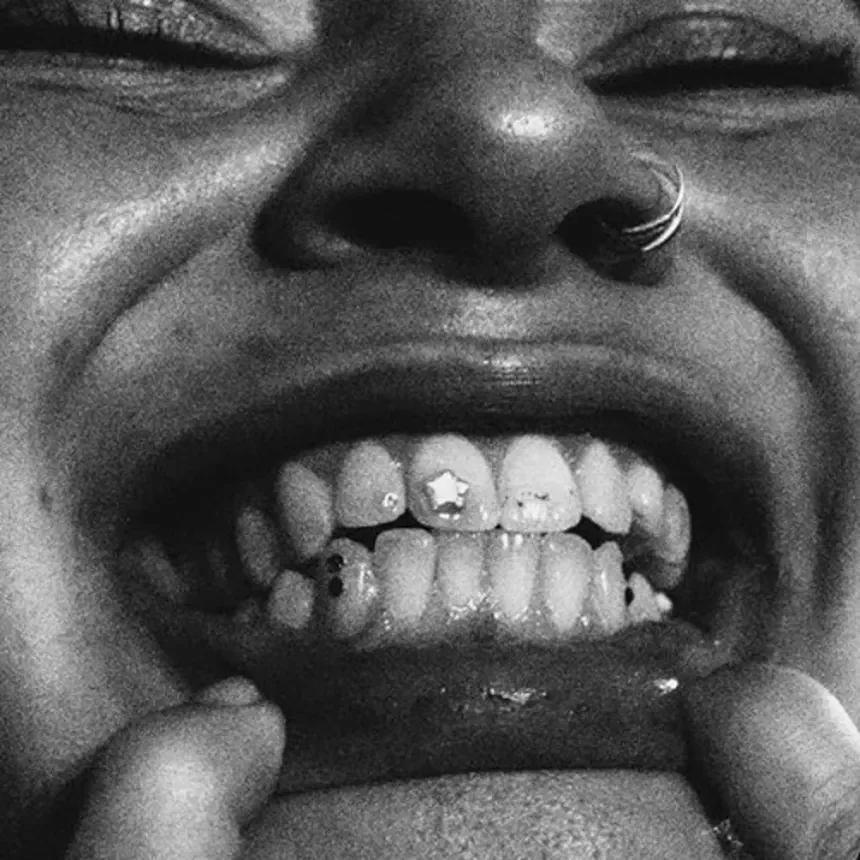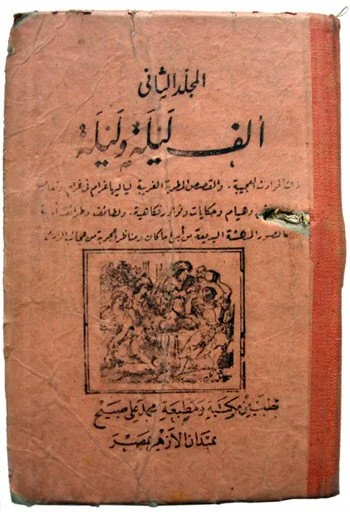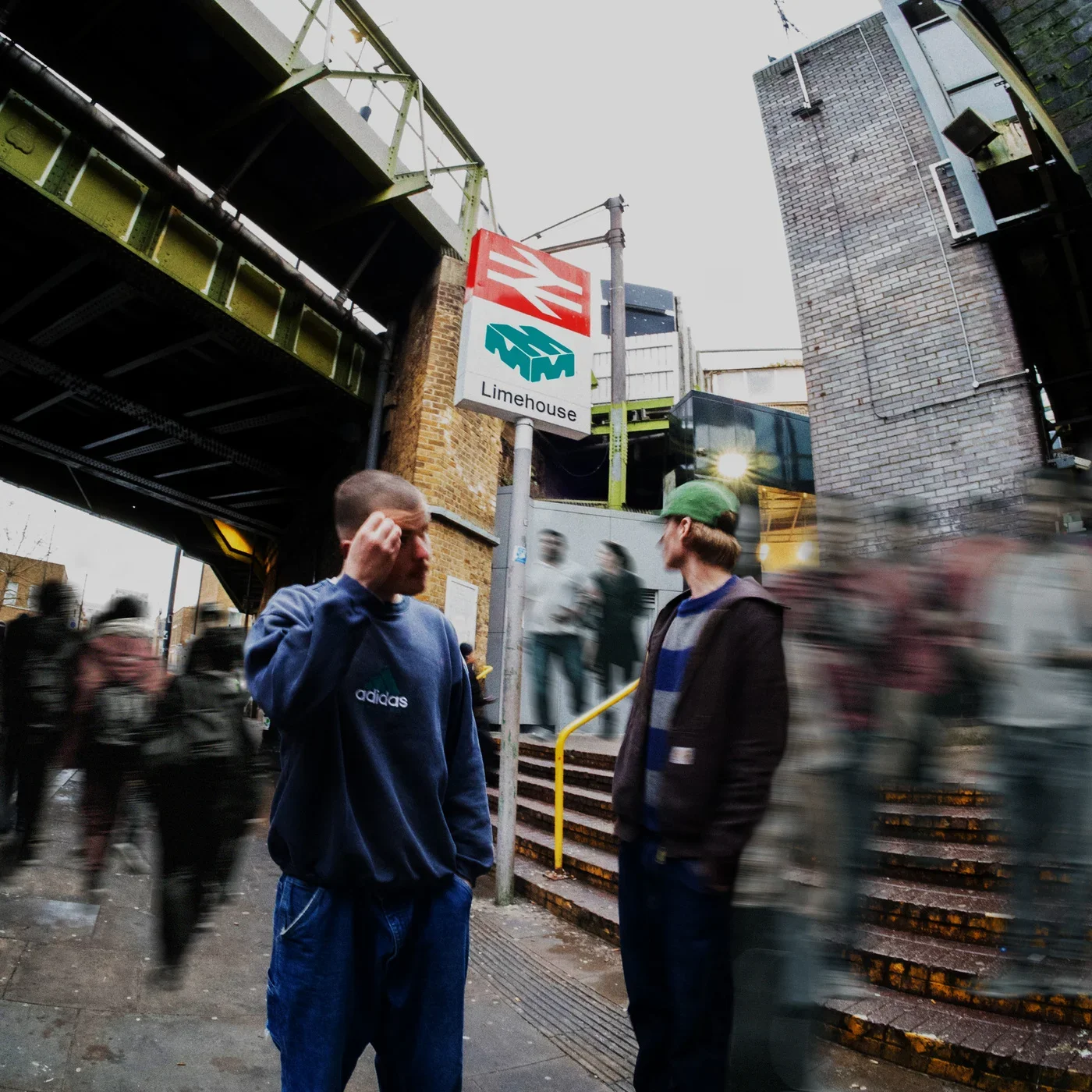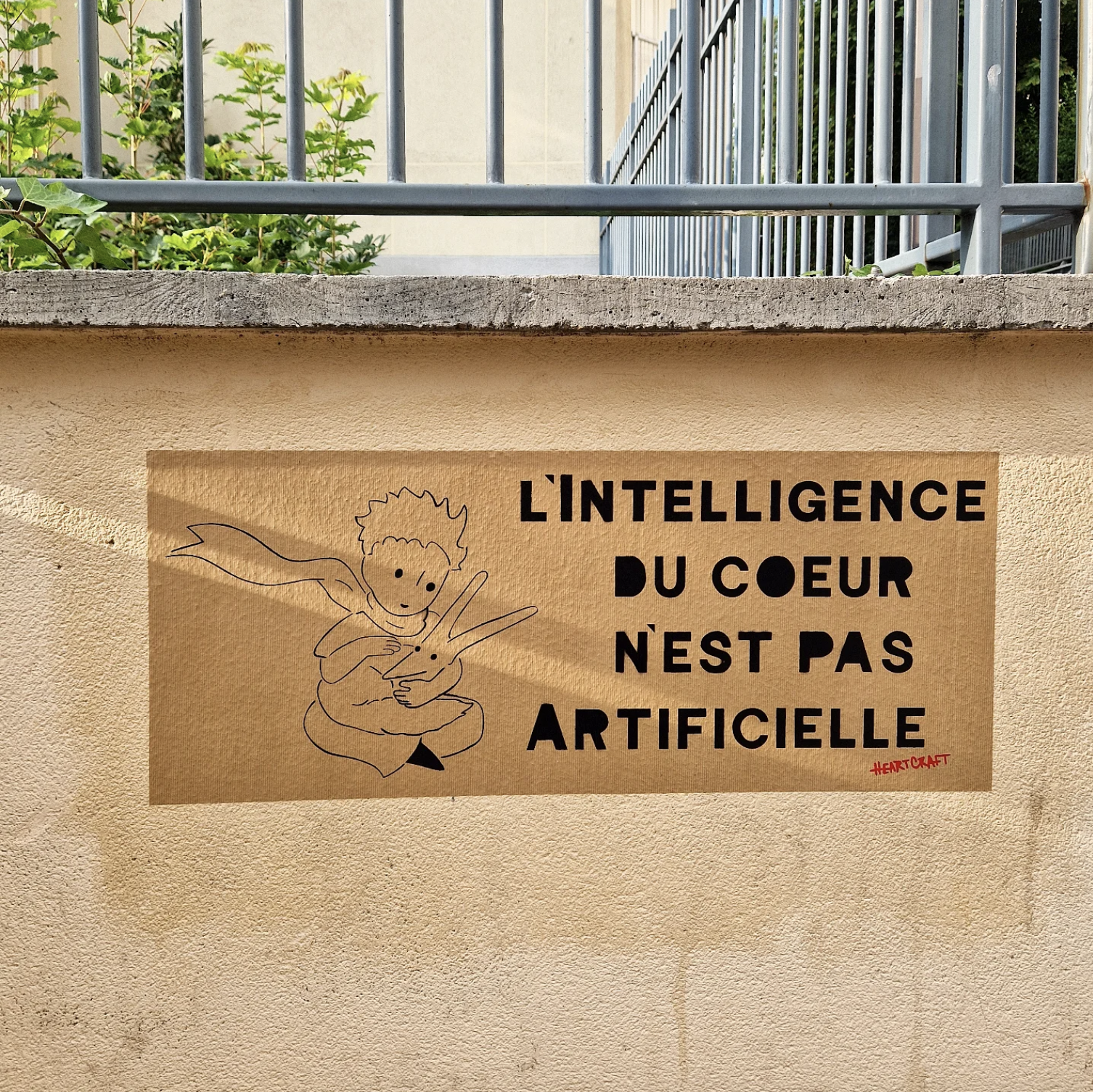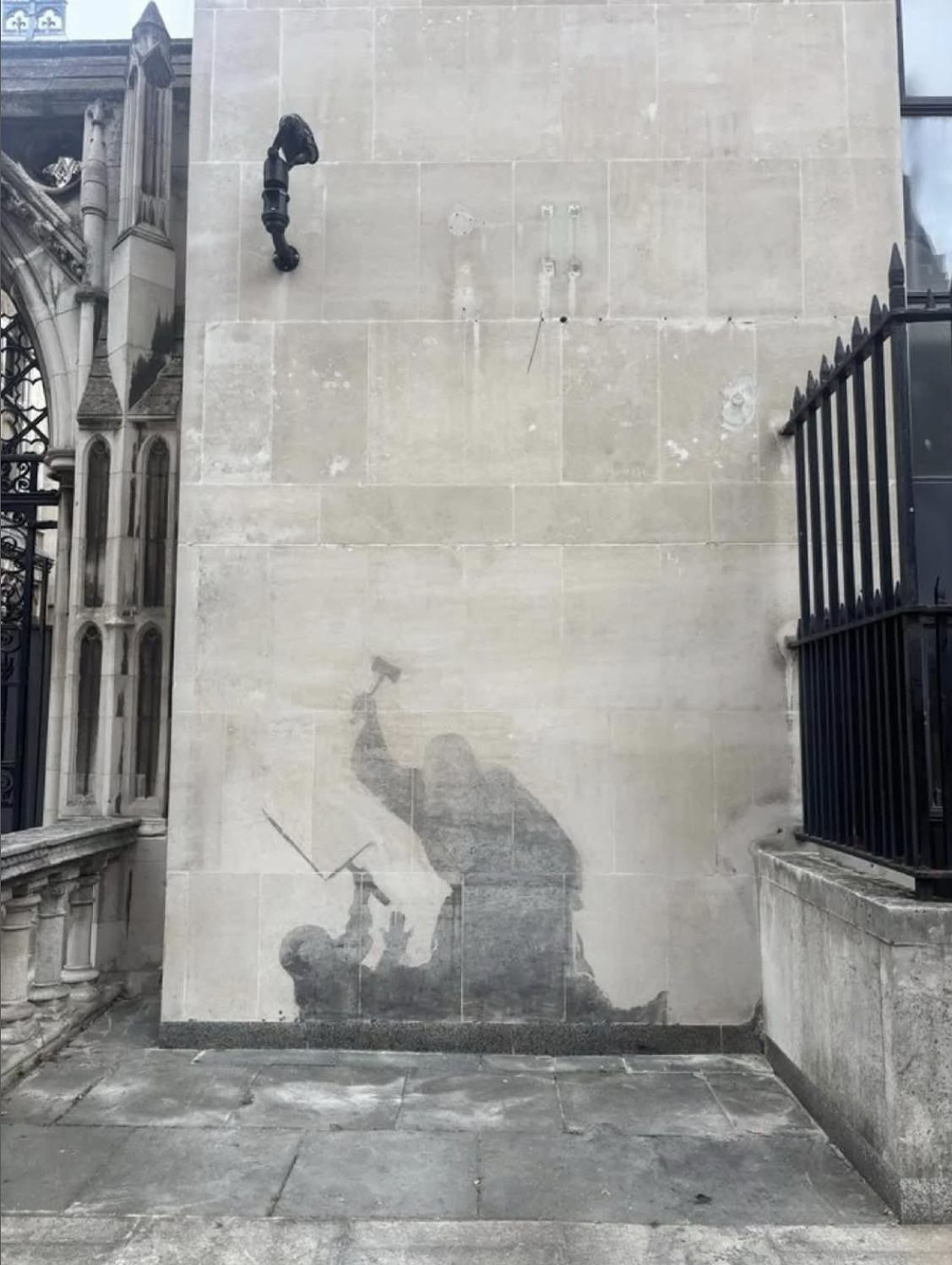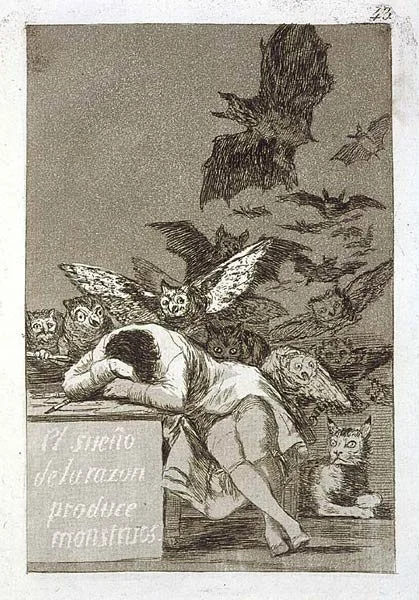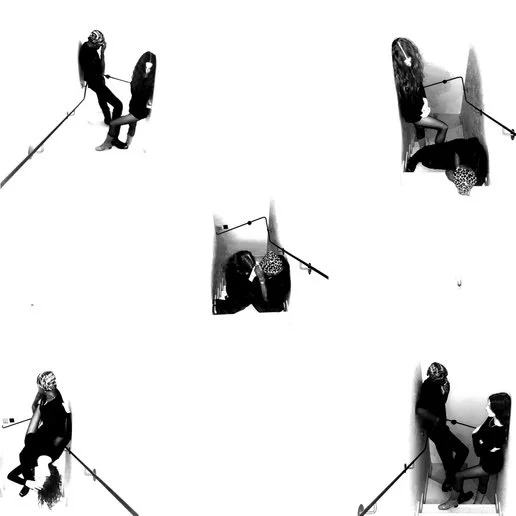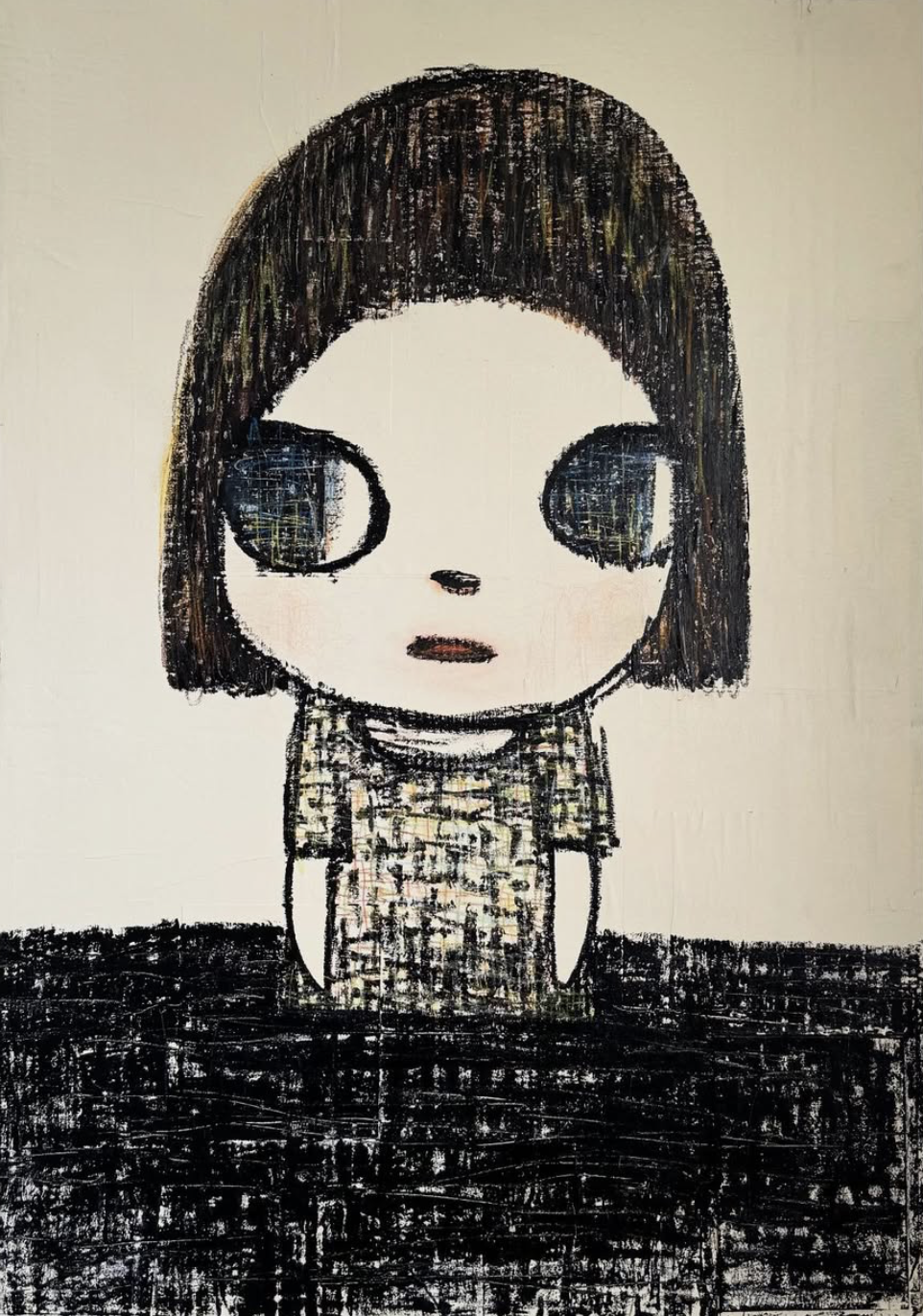Got a lot on my mind…
Shattering and Gathering Our Traces
Artwork: Kader Attia, Resonance, mixed media, 2025
Algerian-French artist Kader Attia’s recent exhibition at Lehmann Maupin in New York, Shattering and Gathering Our Traces, is a poetic meditation on the concept of repair and renewal. Where wounds—whether historical, public or individual—are addressed, highlighted and mended through the material process of artmaking, and that reflects a broader dialogue with what it means to be human. Attia believes a core aspect of his work is as a researcher, and his artwork melds ideas with the material, delving into areas such as history, migration, colonialism, identity and culture. On the specific theme of the exhibition, Attia says, “The idea is that traces aren’t necessarily already broken, but by their very fragility…they always carry the potential to be shattered at any time. This tension between breaking and mending runs through everything I do.”
Everyday objects, artefacts and war-time memorabilia become the basis for his installations invoking memories, stories, and intuitive associations. Of his practice, Attia says, “There’s always been poetry in my work, a way of lifting the narrative toward something more hopeful, more human. When you’re too politically precise, you risk losing that broader connection. Poetry, instead, can carry emotion and meaning to places that facts alone can’t reach.”
One of the central installations of the exhibition is Resonance (2025). Initially titled, Social Media, in this work Attia explores the idea of the illusory nature of experience and interaction through technology and social media. Regarding technology Attia says, “I’m not against technology. I use it, but I wanted to respond to it with low-tech artwork. To bring back the physicality of experience, the playfulness that art can offer, even when it carries a serious message.” The tension in the artwork between connection and isolation is explored by filling the main gallery space with birdcages, each suspended by slender ropes and containing a small bell. Beneath each cage hangs a thicker rope extending to the floor. Visitors moving through the space brush up against or pull the ropes, resulting in the bells chiming softly and irregularly.
Speaking about the installation, Attia says, “For a long time, I was very focused on the political critique of what we call the ‘information society’. We live in a time where everyone speaks constantly—posting, commenting, sharing—but very few people actually listen. On social media, we believe we’re addressing the world, yet we’re really talking to a handful of people. It’s a society of endless communication that ends up as miscommunication.” Each birdcage is a metaphor for an individual voice, and the overlapping sounds of bells forms a collective and transitory coexistence within a broader network. For Attia each bell, each human voice is “…a sign, a signal, trying to be heard.”
Shattering and Gathering Our Traces is showing until December 13, 2025.
you're a star
Fred again.. and Amyl and the Sniffer’s track you’re a star, is one of those songs I can’t stop listening to, even a month out from the release. Big bass and gritty sound perfectly matched with lyrics and voice makes for a great vibe. Check it out!
Lifelog_chandelier_remaster
The Biwako Biennale in the Shiga Prefecture in Japan is about to end, but I wanted to highlight one of my favourite artists, Kosei Komatsu, and his installation in one of the buildings turned into studios, in Omihachiman Old Town. Komatsu’s installation, Lifelog_chandelier_remaster (2025), is constructed from washi paper using a 3D printer. Like many of Komatsu’s installations it is inspired by nature, light and movement, especially his fascination with birds and the concept/action of floating. The mobile-sculpture installation works beautifully with the overall theme of the Biennale which is “flux”. The curatorial statement reads:
“The theme for the 11th BIWAKO BIENNALE in 2025 is “流転〜FLUX”. All things are in constant motion, never remaining the same. What we recognize as a single, unchanging self is, in truth, an illusion — our cells are constantly dying and regenerating, ensuring that we are never the same, even from one moment to the next.
Not only us humans, but everything in this world is in a perpetual state of change.
‘When Yin reaches its extreme, Yang begins to emerge; when Yang reaches its peak, Yin begins to manifest.’
All things may drift within the waves of flux, changing form as they carve the passage of eternity. Feel the flow of creation and transformation within the art at BIWAKO BIENNALE 2025 “流転〜FLUX”, while allowing your thoughts to drift toward the cosmos. We invite you to experience the ultimate stage where you can begin a dialogue with your inner self.”
Material for a film
Image: One of the 13 bullets fired at Wael Zuaiter hit volume two of One Thousand and One Nights which Zuaiter carried on him when he was assassinated in Rome, Italy on 16 October 1972
In 2006 Palestinian artist Emily Jacir created an installation for the Sydney Biennale, Material for a film. The installation comprised notes, photographs, portraits, letters, postcards, telegrams and audio recordings of phone conversations relating to the life and death of Palestinian poet/intellectual Wael Zuaiter, who was murdered by Israeli Mossad agents outside his apartment in Rome on October 16 1972. Inspiration for the title and form of Jacir’s project came from a book published in 1979 by Zuaiter’s companion, Sydney-born artist Janet Venn-Brown, For a Palestinian: A Memorial to Wael Zuaiter. One of the chapters of the book was titled “Material for a film” by Elio Petri and Ugo Pirro, involving a series of interviews conducted with the people who were part of Zuaiter’s life in Italy. Petri and Pirro were going to make a film, but Petri died shortly afterwards and the film was never realized. This chapter was the point of departure for Jacir’s artwork.
Zuaiter’s assassination was one of several in Europe and the Middle East during that time by Mossad agents of Palestinian artists, intellectuals and diplomats. Zuaiter was gunned down, twelve bullets to the head and heart. A thirteenth bullet lodged into the spine of the book he carried, One Thousand and One Nights; a book Zuaiter was in the process of translating from Arabic into Italian. For the 2006 version of this ongoing installation, Jacir learned how to shoot a .22 calibre pistol like the one used to kill Zuaiter, and which she then utilised to shoot 1000 blank white books that were then arranged on shelves in the exhibition. Material for a film is not only an action and installation that seeks to remember, but also discover Zuaiter, it is also about the many Palestinian lives martyred, their stories and lives cut short, only to be remembered by those left behind.
The first art story I wrote on one of Emily Jacir’s installations was Memorial (2001). Material for a film is the second, and can be read here.
Soul Prints
Artwork: Mural by Millo, Soul Prints, Biblioteca Civica di Roseto degli Abruzzi, Profilo Istituzionale, 2025
Street artist Millo’s latest mural has an inspiring story behind it. Titled Soul Prints, Millo wrote this about its creation at the Biblioteca Civica di Roseto degli Abruzzi:
“It was a great honor for me to work with the young people who created the Association @ilbelloresta (the beauty remains) in memory of Flavia di Bonaventura, whose life was tragically cut short by a hit-and-run driver in 2022.
Flavia was 22 years old and was studying at the Academy of Fine Arts in Rome; she was a painter who was also passionate about photography. Her friends immediately rallied together to remember her, to tell everyone that ‘il bello resta’ (the beauty remains) and to leave a sign of her presence in the city every year through an art festival dedicated to her.
It is within their festival that this year I created the work ‘Soul Prints’ a mural inspired by Flavia’s life and that of her friends. By what they were and what they continue to build daily.”
Metamorphosis of Consciousness
Artwork: Chiharu Shiota, Metamorphosis of Consciousness, 2025
A stunning installation by Chiharu Shiota titled Metamorphosis of Consciousness will feature in her upcoming exhibition, Echoes Between, at TEMPLON in New York. The installation was first created for another solo exhibition from March this year, Silent Emptiness, at Red Brick Art Museum in Beijing. Like many of Shiota’s artworks, the installation explores a signature theme, the idea of “presence in absence”. As Shiota says: “Absence does not signify disappearance but rather an integration into a vaster universe, re-entering the flow of time and forming new connections with all things.” This idea of states of consciousness is also expressed by a story of transformation “The Butterfly Dream” in an ancient foundational Taoist text Zhuangzi, authored by Zhuang Zhou, that inspired Shiota to create Metamorphosis of Consciousness. In the story Zhuang Zhou recalls a dream in which he is a butterfly, soaring through the sky with no recollection of his human form. Upon waking, he finds himself firmly in his human body, prompting the question: Is he a butterfly dreaming he’s Zhuang Zhou, or a man dreaming he’s a butterfly?
Surrounding the empty bed in Metamorphosis of Consciousness are hanging shimmering threads of lights and iridescent wings. The bed refers to the absence/presence of the physical body, but also the sleep-state and the process of dreaming referred to in Zhou’s tale. The threads of lights and wings suggest the altered perception through dreaming, of being conscious of other dimensions in one’s awareness of the self. And while Shiota refers to entering sleep as a journey beyond the body and the intimation of future death, it is life and Shiota’s own personal journey which shapes this installation and her art as a whole.
Echoes Between opens at TEMPLON, New York, November 6 2025 to January 22, 2026.
Deer in the forest
Artwork: OAKOAK, Deer, Paris, 2025
On a mossy patch of a wall in Paris, street artist OAKOAK (@oakoak_street_art) has created yet another small, poetic mural, with the accompanying comment: “Dear deer, ‘I was walking in the nearby forest. The forest was full of voices.’”
Bukhara Biennial
Artwork: Blue Room, by Abdulvahid Bukhoriy in collaboration with Jurabek Siddikov, Bukhara Biennial, 2025
Something magical has been created in Uzbekistan in the city of Bukhara, a former Silk Road trade destination and one of Central Asia’s cultural crossroads. The inaugural Bukhara Biennial titled, Recipes for a Broken Heart features the work of 70 artists, pairing international contemporary artists with Uzbekistan artists to create artworks that speak to the location, architecture, the local art traditions, and to wider cultural traditions such as food, music, stories and spiritual beliefs. The Artistic Director, Diana Campbell, commented on the choice of Bukhara saying: “For centuries, religious and cultural traditions from all corners of the world have commingled in Bukhara, resulting in a rich atmosphere of learning, craft and artistic production. It has always been a place where people came together to find togetherness in the quest for a more meaningful life through a search for spiritual, intellectual, and worldly knowledge.”
The title and theme of the Biennial is inspired by the story of the creation of a local culinary dish, plov, that was invented by the father of modern medicine, Ibn Sina. Plov is a rice and meat dish and was made to heal a young prince who was lovesick after being banned from marrying a craftsman’s daughter. The overriding theme is one of healing, as well as the blending of food, love and medicine. Healing not simply in terms of bodily wounds, but that of the heart, mind, soul, as well as wounds relating to the state of the world and events such as wars that tear the fabric of lives, cultures and nations apart.
One of the key installations is Blue Room by Abdulvahid Bukhoriy in collaboration with Jurabek Siddikov. Bukhoriy is a ceramic artist and he and Siddikov created a gorgeous, immersive ceramic installation in the former prayer room of Gavkushon Madrasa. The room is covered in handcrafted blue tiles; the blue glaze made from materials extracted from local plants, and the tiles featuring Uzbek textile motifs and the patterns of algae, fish and flowing water. The overall effect is one of being submerged underwater. The large chandelier sculpture suspended from the ceiling is made from brass and copper, created in collaboration with Siddikov who is a master coppersmith, and inspired by fish forms found in Central Asian ceramic traditions. The installation drew on ancient healing rituals for inspiration, where fish become vessels for absorbing human illness.
In her curatorial statement, Campbell elaborates on the Biennial’s theme, stating: “In many mystical traditions, the heart is the key to connecting with the higher frequency of the divine. Perhaps even more so than the brain, the heart contains an ‘imaginative intelligence that is so powerful that it can change the world in what it manifests through the combination of knowing and loving… Art facilitates insights into how humans participate in worldmaking—how our words, thoughts, and actions impact us, as well as how we shape and are shaped by our environments.’”
Bukhara Biennial is on show until November 20th 2025.
cheap
Photograph: Bisan Owda in Gaza, 2025 (photo by @mahmoudhamda for Dazed article)
Anguished and powerful words recorded today by Palestinian journalist and film maker Bisan Owda (@wizard_bisan1) as Israel resumes its bombing of Gaza regardless of the ‘ceasefire’:
“I hate that every time the bombings are resumed it comes with the feeling of how our lives are so cheap. To the amount that no one cares about, yeah, finally they survived, please no more killings, everyone is alive now, is precious. No one is feeling this. I know peoples are feeling this, but no one is doing a right thing to make us feel like this. It feels so cheap that they can kill us whenever they want, like putting us in a cage and then, that’s so hard. That’s a very hard feeling. This is what I hate now…now the buzzing sound, now the bombings. This is what I’m thinking about now. Why we’re so…cheap.”
Limehouse
Lately, I’ve been listening to Polo Jaffa’s track Limehouse (released this year) on repeat, and I especially love their remix of Fontaines D.C. Favourite, which you can listen to here at SoundCloud. Check it out!
The Intelligence of the Heart is Not Artificial
Artwork: Paste-up by heartcraft_streetart, The Intelligence of the Heart is Not Artificial, 2025
Wonderful and relevant paste-up by @heartcraft_streetart, The Intelligence of the Heart is Not Artificial. This is what the French urban artist had to say about this piece:
“At a time when social media and other digital platforms have taken the ascendancy of our lives, at a time when Silicon Valley embarks on a race for ‘superintelligence’ destined to overtake the human brain, it’s time to remember that what makes up the very essence of our nature human these are the feelings, emotions, empathy that we can feel towards others because it is not learned, not modeled. That's probably one of the lessons we could learn from Little Prince version 2025.”
Banksy scrubbed
Artwork: Banksy mural at Royal Court of Justice, London, 2025
Well, it didn’t take long for Banksy’s mural at the Royal Court of Justice in London to be scrubbed. Its removal is a powerful statement in itself.
The Sleep of Reason
Artwork: Francisco Goya, The sleep of reason produces monsters (El sueño de la razon produce monstruos), plate from Los Caprichos, 1793-9
Today I heard someone recite the first stanza of William Butler Yeats’s poem, The Second Coming, and it resonated. When reason, the rule of law, common sense, freedom of speech, humanity and compassion are lost, chaos, violence and heinous crimes ensue:
Turning and turning in the widening gyre
The falcon cannot hear the falconer;
Things fall apart; the centre cannot hold;
Mere anarchy is loosed upon the world,
The blood-dimmed tide is loosed, and
everywhere
The ceremony of innocence is drowned;
The best lack conviction, while the
worst
Are full of passionate intensity.
Justice
Artwork by Banksy, Royal Courts of Justice, London, 2025
New work by Banksy at Royal Courts of Justice in London. No words needed.
Every river, every sea
Artwork: Alice Pasquini, Every river, every sea, 2025
Italian artist Alice Pasquini recently created this painting, Every river, every sea. It’s inspired by the Global Sumud Flotilla which is currently on its way to Gaza. She wrote this about it: “More than 50 ships from 44 countries are about to set sail from the Mediterranean with activists, doctors, artists and parliamentarians on board. The objective: break the blockade, bring food, medicine, milk for children and open a humanitarian corridor by sea.” Let’s hope it sends a message to Palestinians that they are not alone, that millions of people around the world are watching and want desperately to help. Let’s hope the blockade can be broken.
Closer To You
Artwork: Mural by NEAN, Closer To You, Perpignan, France, 2025
Another great mural from NEAN (@nean_kingdom), Closer To You in Perpignan, France, 2025, for Festival Square Up.
Clinamen
Artwork: Céleste Boursier-Mougenot, Clinamen, Bourse de Commerce, Paris, 2025
French artist Céleste Boursier-Mougenot’s meditative installation Clinamen is currently showing at Bourse de Commerce in Paris until September. I was fortunate enough to see this installation in a previous iteration, and was mesmerised by the pool of water with the porcelain bowls moving to a slight current, producing spontaneous melodic sounds. Part of Boursier-Mougenot’s intention with Clinamen is to allow the viewer a space to slow down, to simply listen and watch the bowls as they gently collide. The Bourse de Commerce version of Clinamen was also inspired by the architectural space designed by Tadeo Ando, with the basin double its usual size, reflecting the sky above visible in the Rotunda’s dome. As Boursier-Mougenot explains: “My approach is largely based on taking into account the places and spaces where I am invited to present my work. I see the architecture of each new exhibition venue as a matrix into which the technical and aesthetic principles of the installation are cast, as if into a mould, resulting in a new version in situ.”
We Don't Count
Listening to this newly released song on repeat by Yves Tumor and NINA, We Don’t Count. Check it out!
A Yoshitomo Nara Day
Artwork: Yoshitomo Nara, Traveling with Hazy Humid Day, 2025
Been feeling a bit stuck…


